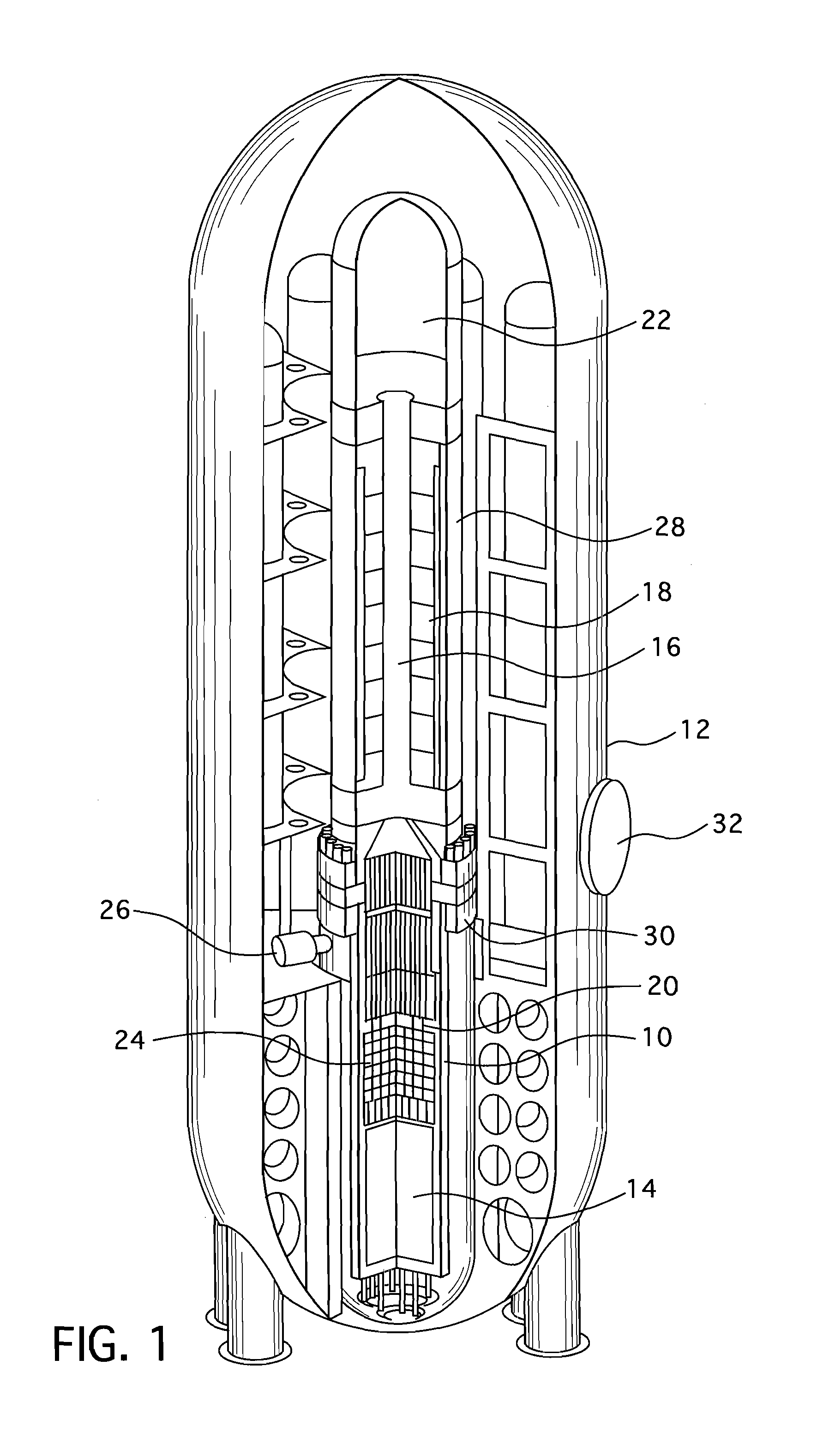Method of refueling a nuclear reactor
a nuclear reactor and refueling technology, applied in nuclear engineering, nuclear elements, greenhouse gas reduction, etc., can solve the problems of affecting the operation of light water reactors, requiring periodic outages, and requiring careful attention to avoid damage or unnecessary radiation exposure, and traditional methods of refueling from being applied directly
- Summary
- Abstract
- Description
- Claims
- Application Information
AI Technical Summary
Benefits of technology
Problems solved by technology
Method used
Image
Examples
Embodiment Construction
[0018]The steps of this embodiment are sequentially illustrated in FIGS. 3-14. This embodiment uses a temporarily installed refueling machine 36 attached directly to the reactor vessel 10. The machine 36 can use the reactor vessel stud holes 38 or a similar feature to secure and align itself to the reactor vessel 10. The machine preferably includes a shielded tank 40 that is open at the top and bottom. The tank seals to the flange 30 of the reactor 10 by contacting the mating surface of the vessel. An O-ring or similar soft seal can be used to limit leakage. Pressure applied to make the seal is either provided by the weight of the tank or by mechanical fasteners such as the studs 42. Any leakage would be detected by the existing reactor vessel leak-off lines provided between the O-ring seals used to seal the reactor vessel during plant operation. The tank 40 has a penetration 44 perpendicular to the center line of the tank. This penetration provides a means of transferring the fuel ...
PUM
 Login to View More
Login to View More Abstract
Description
Claims
Application Information
 Login to View More
Login to View More - R&D
- Intellectual Property
- Life Sciences
- Materials
- Tech Scout
- Unparalleled Data Quality
- Higher Quality Content
- 60% Fewer Hallucinations
Browse by: Latest US Patents, China's latest patents, Technical Efficacy Thesaurus, Application Domain, Technology Topic, Popular Technical Reports.
© 2025 PatSnap. All rights reserved.Legal|Privacy policy|Modern Slavery Act Transparency Statement|Sitemap|About US| Contact US: help@patsnap.com



